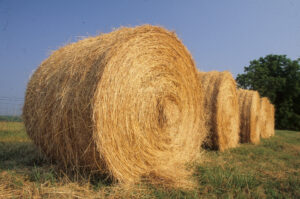Preparing Our Livestock for the Cold Winter Months
go.ncsu.edu/readext?972117
en Español / em Português
El inglés es el idioma de control de esta página. En la medida en que haya algún conflicto entre la traducción al inglés y la traducción, el inglés prevalece.
Al hacer clic en el enlace de traducción se activa un servicio de traducción gratuito para convertir la página al español. Al igual que con cualquier traducción por Internet, la conversión no es sensible al contexto y puede que no traduzca el texto en su significado original. NC State Extension no garantiza la exactitud del texto traducido. Por favor, tenga en cuenta que algunas aplicaciones y/o servicios pueden no funcionar como se espera cuando se traducen.
Português
Inglês é o idioma de controle desta página. Na medida que haja algum conflito entre o texto original em Inglês e a tradução, o Inglês prevalece.
Ao clicar no link de tradução, um serviço gratuito de tradução será ativado para converter a página para o Português. Como em qualquer tradução pela internet, a conversão não é sensivel ao contexto e pode não ocorrer a tradução para o significado orginal. O serviço de Extensão da Carolina do Norte (NC State Extension) não garante a exatidão do texto traduzido. Por favor, observe que algumas funções ou serviços podem não funcionar como esperado após a tradução.
English
English is the controlling language of this page. To the extent there is any conflict between the English text and the translation, English controls.
Clicking on the translation link activates a free translation service to convert the page to Spanish. As with any Internet translation, the conversion is not context-sensitive and may not translate the text to its original meaning. NC State Extension does not guarantee the accuracy of the translated text. Please note that some applications and/or services may not function as expected when translated.
Collapse ▲Getting Livestock ready for Winter Months & Knowing the Quality of Forages
As winter is quickly approaching us, we want everyone to be prepared to care for their livestock. There are many things as livestock owners we have to keep a check on during these hard months such as adequate feeding and forages, making sure our animals have plenty of fresh water and access to dry areas that can block some wind. Preparation should begin before winter hits to ensure that you have the proper amounts of hay or forages stored for the cold season as well as making sure that barns and other shelters and winter equipment are repaired before we get into the heart of winter. While trying to get prepared for winter, make yourself some short term preparations to get done- the what needs to be done everyday, as well as longer term preparations that may consist of those larger projects like barn repairs that end up taking more than a week to complete. Some ideas for your farms checklist could consist of:
Long Term:
- Purchase/store plenty of hay or other forages
- Build or repair shelters and barns
- Purchase or repair hay/forage feeders
- Purchase or repair water troughs
- Purchase or repair water heaters (if applicable)
- Check and repair fencing, prepare pastures for winter
Short Term:
- Provide fresh and clean water everyday
- Provide adequate hay or other forages each day
- Grain or feed supplement through winter
- Ensure livestock are able to get out of the elements
How good are your Forages?
Did you know that you can test your livestock feeds like they do for humans? As we move farther into winter, knowing what you are feeding becomes more important as the winter weather hits. Increasing feed consumption in your livestock helps them keep their energy up which will help them stay warm. Do you know how your forages are helping your livestock? Are they needing any additional feeds? Get your feeds tested! Forage and Feed Testing can be done year round! Forages include- hay, silage, roughages, and even get your home feed rations sampled if you are wanting to know more about them!
Getting your forages tested can give you an analysis of the nutrient content in what you are feeding your livestock. You can test for nitrates only, aflatoxins only, or a complete analysis of your sample. The complete analysis of the forage samples include- Moisture, Protein, Fat, Fiber, & Minerals (Calcium, Phosphorus, Sulfur, Magnesium, Sodium, Potassium, Copper, Iron, Manganese, & Zinc). The complete analysis of your forage sample will cost $10.00 while the nitrates and aflatoxins are free.
If you need any help or have any questions please contact Bailee Perkins, Caswell Livestock Agent by phone or email at: 336-694-4158 ext. 5 or bailee_perkins@ncsu.edu





